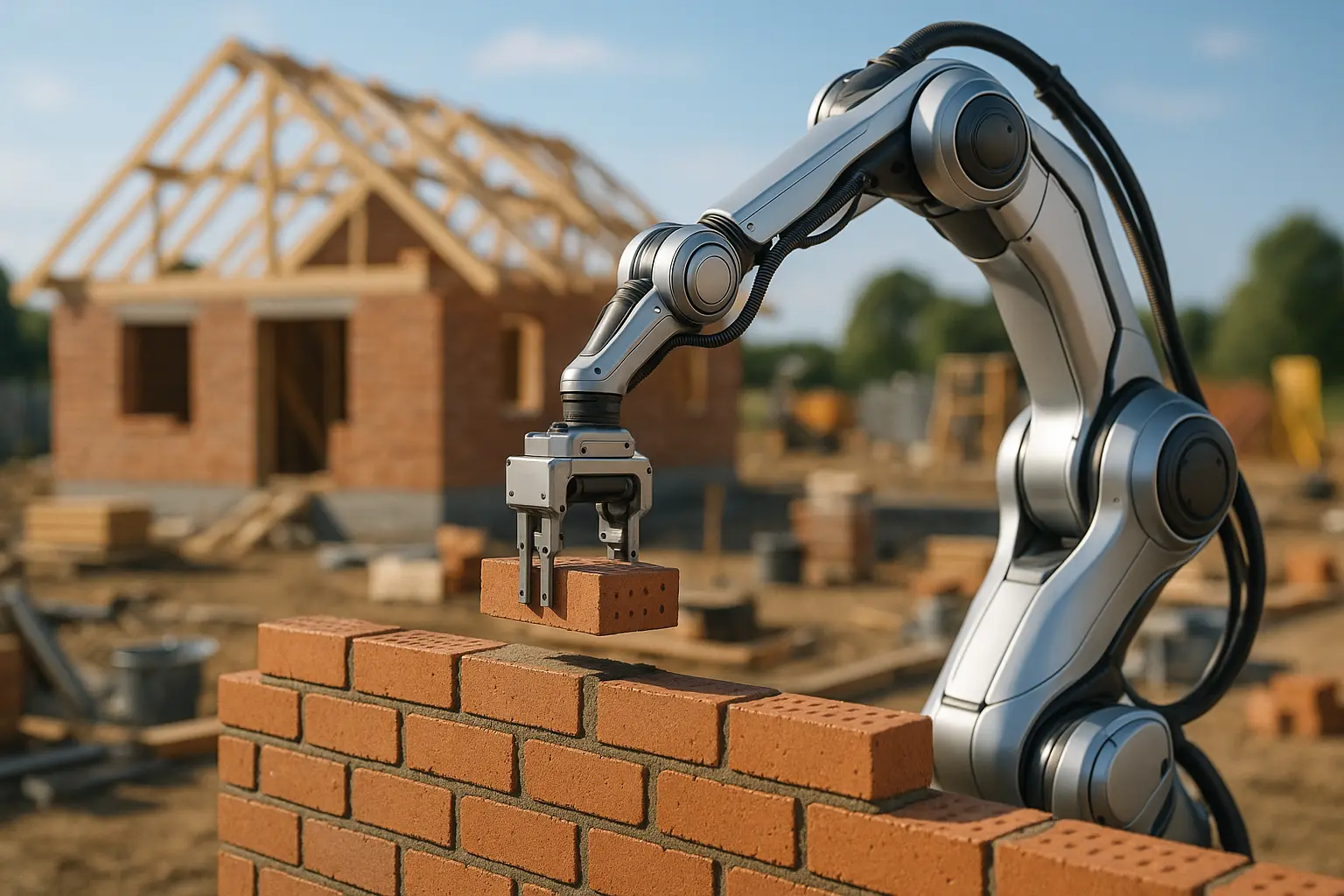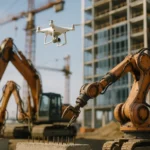In the ever-evolving world of technology, the construction industry stands on the precipice of a revolution. The integration of robotics into housing development is not just a possibility but an imminent reality. As we stand at the forefront of this new wave, our homes will no longer be mere buildings. They will become testaments to innovation, efficiency, and sustainability. But what does this mean for us? How will these robots transform our lives, and what are the implications for both the industry and society? Let’s delve into this captivating journey.
The Rise of Robotics in Construction
In recent years, the construction industry has witnessed a paradigm shift with the introduction of robotic technology. As we observe this transformation, it’s clear that these advancements are not just incremental—they’re revolutionary. The building sector has traditionally lagged in adopting cutting-edge technology; however, the winds of change are sweeping through, powered by automation and efficiency.
AUAR, a leader in this innovative shift, has been at the forefront of developing robots tailored specifically for construction. Their robots are designed to tackle some of the most daunting challenges in the industry. From laying bricks to performing precision tasks, these mechanical wonders are reducing human error and increasing productivity. Ontario has become a hotbed for such innovations, with numerous projects underway that deploy robotic systems to construct homes more quickly and cost-effectively than ever before.
But the impact of robotics goes beyond speed and accuracy. Robots are reshaping how we approach design and construction. Modular homes, built piece by piece by robotic systems, allow for a level of customization and adaptability that was previously unimaginable. The result? Sustainable housing solutions that are both environmentally friendly and cost-effective. Costs are driven down as automation reduces waste and minimizes delays, making homes more accessible to the average consumer.
Innovative Housing Designs with Robotics
Design in the modern housing market is undergoing a renaissance, much of which can be attributed to the integration of robots. Gone are the days when homes were merely functional structures. Today, they are a canvas for creativity, and robotics is the brush that architects use to paint their vision. The ability to work with robotic precision allows for designs that are not only aesthetically pleasing but also structurally sound and sustainable.
The use of robotics in design is revolutionizing how we conceptualize homes. Take, for instance, parametric architecture, where robots manipulate predefined parameters to create structures that are both innovative and functional. This allows architects to push boundaries while maintaining efficiency and precision. As robotic arms lay down intricate patterns of materials, they bring to life designs that would be impossible for human hands to replicate.
Moreover, the industry is seeing a surge in developing smart homes equipped with integrated technology services. Imagine homes equipped with automation systems that can adjust lighting, temperature, and security settings at the touch of a button. Thanks to robotics, such designs are no longer the stuff of science fiction. As we move forward, it’s clear that robotic technology will play a pivotal role in shaping the homes of the future.

Challenges and Opportunities in Robotic Construction
While the integration of robotics in construction presents immense opportunities, it also brings forth a set of challenges that we must address. One of the primary hurdles is the initial costs associated with implementing robotic systems. While they promise long-term savings, the upfront investment can be significant. However, as with any nascent technology, these costs are expected to decrease over time as robots become more mainstream.
Another challenge is the potential displacement of workers. The introduction of robots has sparked debates over job security in the construction industry. While robots can handle repetitive and dangerous tasks, there remains a pressing need for skilled labor to oversee and manage these robotic systems. Rather than eliminating jobs, robots are reshaping the workforce, creating new roles that demand specialized skills. Training and education will be key to ensuring that workers are equipped to thrive in this new environment.
Despite these challenges, the opportunities that robotics offer are vast. The potential for sustainable building practices, increased efficiency, and reduced costs cannot be overstated. In Ontario, and beyond, we’re witnessing a shift towards a more sustainable and innovative future. By leveraging robotics, the construction industry is poised to meet the demands of a growing population while minimizing environmental impact.
The future of housing development is here, and it’s driven by robotics. As we adapt to this new era, the benefits are clear: greater efficiency, sustainability, and cost-effectiveness. The challenges, while real, are not insurmountable. With continued development and innovation, the construction industry will not only overcome these hurdles but thrive amidst them.
As we continue to develop and embrace robotic technology, we must remain committed to addressing the challenges that accompany it. By doing so, we ensure that the homes of tomorrow are not only built by robots but for humans. As we look toward the future, one thing is certain: the integration of robotics in housing development is a journey worth taking.
FAQ
What are the benefits of integrating robotics into housing development?
Robotics in housing development offers several advantages, including increased efficiency, precision in construction, reduced labor costs, and the ability to perform complex tasks that might be challenging for human workers. Additionally, robots can work in hazardous environments, thus improving safety on construction sites.
How do robots contribute to sustainable building practices?
Robots contribute to sustainability by minimizing waste through precise material usage, optimizing energy efficiency during construction, and enabling the use of eco-friendly building materials. Their ability to perform repetitive tasks with high accuracy reduces resource consumption, aligning with green building standards.
Are there any challenges associated with using robotics in construction?
Yes, there are several challenges, such as the high initial cost of robotic systems, the need for specialized training for operators, and the integration of robotics with existing construction processes. Additionally, the industry must address concerns about job displacement and ensure that human workers can collaborate effectively with robotic systems.
What types of robots are commonly used in housing development?
In housing development, various types of robots are employed, including autonomous drones for site surveying, robotic bricklayers for masonry work, and 3D printing robots for constructing building components. Additionally, robotic arms are used for tasks that require precision, such as painting and finishing.
How does the use of robotics influence the design and architecture of new housing projects?
The integration of robotics in housing influences design by encouraging modular and standardized elements that are easier for robots to construct. It also allows architects to experiment with innovative structures and materials, as robots can handle complex geometric designs and intricate detailing that may be challenging for traditional construction methods.



